A Motherhood Story

JR Podcast: A Motherhood Story
On this occasion, JR Podcast spoke with Dachelys Valdés and Hope Bastian, who were recognized by the Cuban state as Paulo’s mothers. Read on and listen to the story.
 By Dailene Dovale de la Cruz
By Dailene Dovale de la Cruz
digital@juventudrebelde.cu
July 20, 2020
Translated and edited by Walter Lippmann for CubaNews.

Dachelys Valdés and Hope Bastian, mothers of Paulo Author: Courtesy of the source Published: 20/07/2020 | 06:07 pm
Dachelys Valdes and Hope Bastian were returning from Florida with a concern. Would the pregnancy test be positive?
They met in Cienfuegos, in 2015, during the First National Meeting on Gender Studies and Non-Heteronormative Sexualities. They fell in love. They started a relationship and when they saw it consolidated, they decided to have a baby.
The first thing they did was consult their family doctor. He, kind and diligent, investigated the possibilities of accessing assisted reproduction services and returned the bad news. They could not access the service because equal marriage was not yet recognized in Cuba.
Nor did they find other options. Or yes, but in extremely risky ways.
A friend could pretend to be a partner of one of them, but what if he claimed his rights as the biological father? So many possibilities for disaster: divorce, death. They didn’t want to live in fear. They traveled to Florida with a very deep longing. On their way back they had a little boy in Hope’s belly.
Hope’s name is equivalent to our Esperanza that symbolizes very well the feelings of both women, when they got off the plane on Cuban soil.
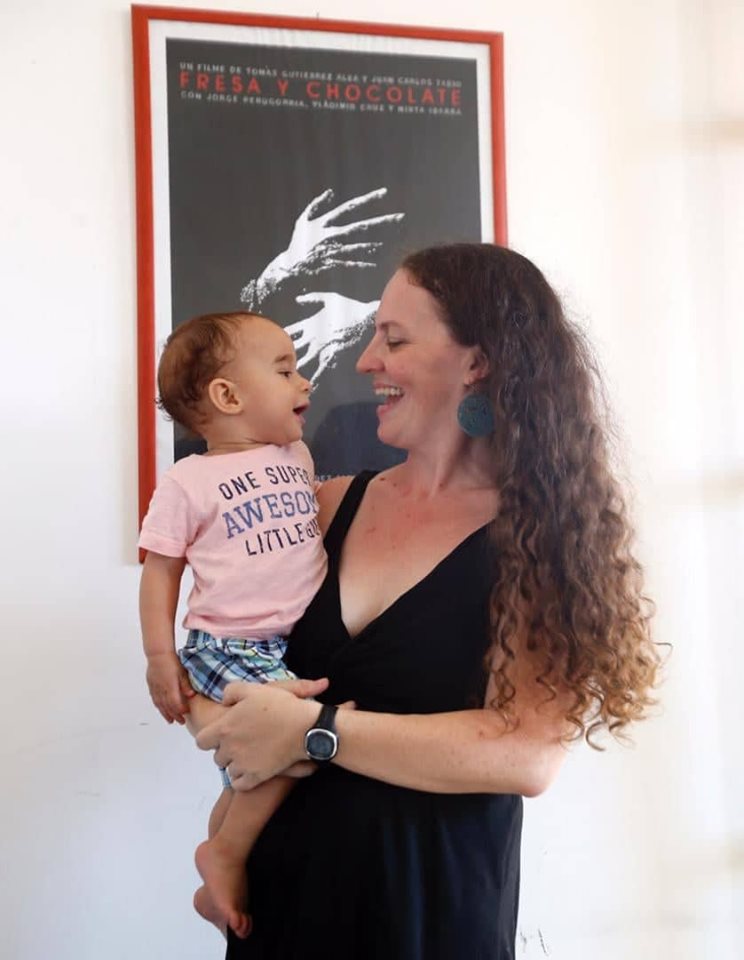
Photo: Courtesy of the interviewees
In Cuba, the birth certificate was slightly changed. The doctor, without anyone getting in the way, crossed out the predetermined male figure and wrote down Dachelys’ name. A small but significant gesture.
Dachelys Valdés is grateful and remembers this stage fondly. They attended the consultations with an in vitro fertilization specialist, no matter where it took place. They did not receive any discriminatory treatment, nor did they feel vulnerable, she confesses. And those who listen to her voice, very clear and soft but not docile, regain their faith in a more inclusive, less prejudiced and homophobic nation.
At the polyclinic, when they were going to be tested, they often tried to look for some sign of embarrassment in it. When they made it clear that they were the accompanying couple, they said “ah, it’s all right”, without further reaction.
Paulo was growing up in Hope’s womb in a calm and happy environment.

Photo: Courtesy of the interviewees
That was a collective pregnancy, the two first-time mothers were accompanied by fathers, brothers, friends.
That group of loving and supportive people has grown over time. I learned part of their story from a teacher at my school, Rocío Baró. One afternoon, at the end of 2019, she told me about the procedures both mothers took to obtain the Cuban citizenship of their little boy. She spoke with such great admiration of these two women that I promised myself to learn more about them, their experiences, their careers and their joys.
The desire became palpable in mid-June. I was checking Facebook, almost like an automaton, when the news came out. “The Cuban state legally recognizes that Paulo has two mothers.”
It had been worth the effort of the trip, for Dachelys to study how the birth would be, but in English. The losses in terms of comfort, being away from much of her support network.
…
Paulo’s citizenship is still an ongoing project, but it is getting closer. They have a document from the Ministry of International Relations, which endorses the possibility of access to the childcare center and free health services.
They also have a birth certificate, which guarantees double maternity, for the first time in Cuba. They arrived at great happiness, free of fear. The process of obtaining such a certificate was slower than usual for families made up of both parents.
First, they started the procedures from Florida, they sent the documentation by post and the certified translation. They returned with their child on a family visa, because it was more feasible to carry out the procedure from Cuba. They knew that due to the newness of the case, the process would take time. They did not expect it to be around a year, nor did they imagine a pandemic. Instead, they confess to being safe and grateful for the end result, of not being left behind.
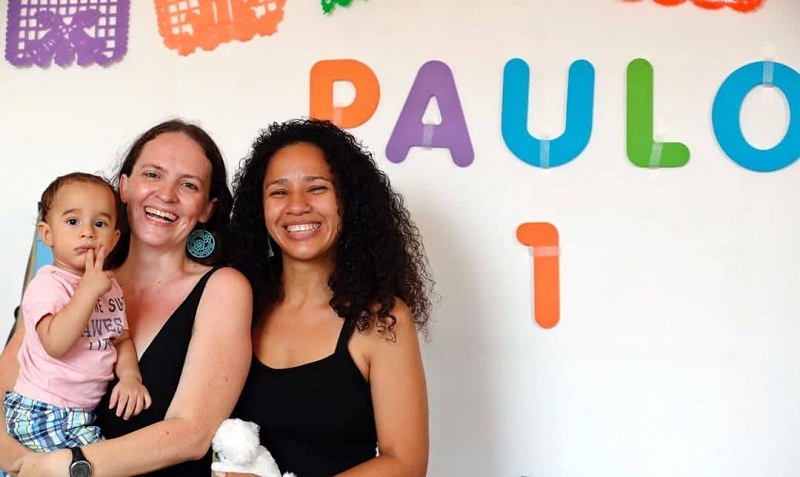
Photo: Courtesy of the interviewees
Since the announcement of their happiness, Dachelys and Hope speak a lot, to anyone who wants to know their story. They tell how they managed to realize their pregnancy and the remaining steps so that their child, for example, can have access to the food in the ration book. They feel that by telling of their experiences they make the LGTBIQ+ community more visible, the need to recognize the diverse forms of family, the access to assisted reproduction by same-sex couples, eliminating stereotypes. To recognize love and commitment as the only requirement to form a family.
They would like their story not to be isolated, not only for couples with resources and access to treatment in another country, although they understand that the laws and social sciences need reality to knock on their doors. And they are ready to continue, with every knock and every step, to bequeath to Paulo a more inclusive and happy Cuba.
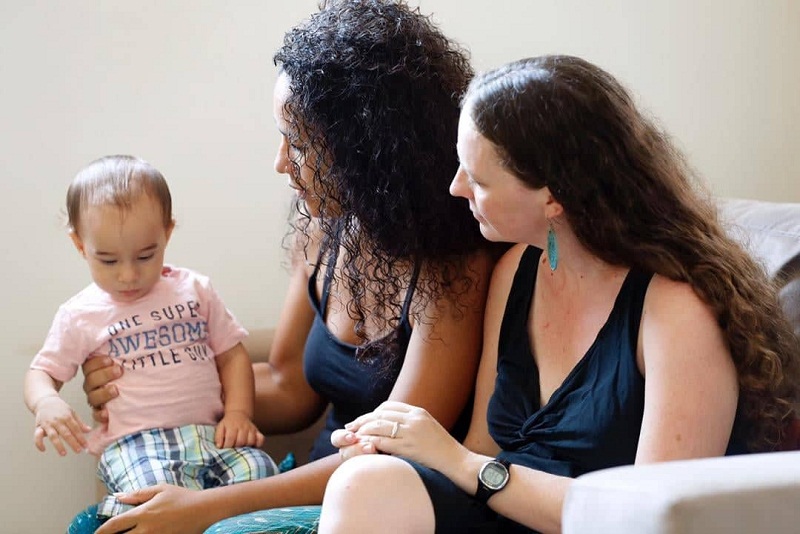
Photo: Courtesy of the interviewees
These are some excerpts from this story. If you want to hear from the voice of Dachelys Valdés and Hope Bastian, the emotions, fears, unforgettable moments, just listen to our podcast. Don’t miss it! [in Spanish]
Women’s Faces and Actions

Women’s Faces and Actions
In Santiago, 17 women serve as sector chiefs of the National Revolutionary Police (PNR)
By Odalis Riquenes Cutiño
July 18, 2020
Translated and edited by Walter Lippmann for CubaNews.
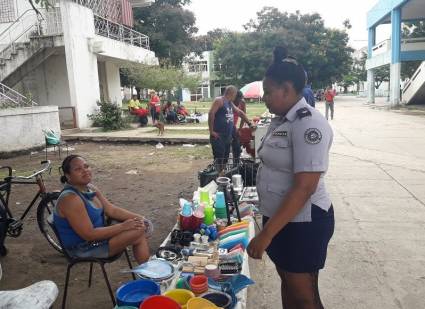
“If women build, how can we not be able to maintain order in the neighborhoods,” says First Lieutenant Evelyn Blanco Cadalzo, in charge of sector No. 102, in the Jose Marti Urban Center Author: Jose Angel Morales Published: 18/07/2020 | 10:24 am
SANTIAGO DE CUBA. For eight years now, the days of the young first lieutenant of the National Revolutionary Police (PNR), Evelyn Blanco Cadalzo, have had the duration of the surrender, the imprint of the sense of duty.
That’s just how long since she graduated from the former Interior Ministry (Minint) Hermanos Marañón University, as a law graduate specialized in public security. Since then, she has been the head of Sector 102 of the First Station, popularly known as Micro Nueve, in the José Martí urban center.
She has under her jurisdiction Blocks A and B of the José Martí Sur Popular Council, a community where she was born and has lived for her 27 years. It’s an area which, although not complicated in terms of criminal potential, is a recipient of criminals from other parts of the city who come there to commit offenses and crimes, such as robbery with force and theft with violence.
Preserving order in the place where you were born, where you have your friends and everyone knows you can be difficult if you are not clear that when duty calls, it is the first thing to be maintained: “You have to have character, set limits well and show that things done badly should not be seen by anyone anywhere in the world.
At the beginning of the year, this novel member of the PNR showed her courage and professional stature by getting involved in what could be considered the most notorious case she has ever been involved in: the capture of an escaped rapist, whom she had to protect from an angry mob with no other shield than her own body.
Hours earlier, as part of her operational work, she learned of the occurrence in her popular council of the reprehensible act against an eight-year-old girl,. Her first admitted thought was for his three-year-old daughter, Hasly Emely Estiven Blanco. She even thought about what she would do to that monster if she had it in front of him at that moment.
Later, chance gave her the opportunity to support her partner in charge of the investigations in the case, first sub-officer Luis Salmón Borrero,. After a long time of tracking him, when she found the offender in the middle of a crowd trying to lynch him, she reacted as she was taught in the ranks of the Cuban Police and took him out at the risk of her own life, protecting him until she could drive him.
“At that moment I felt it was my duty to prevent that man from being attacked. Cuba is a state governed by the rule of law and no one can take justice into his own hands; that is what the law is for,” she stressed.
Evelyn’s daily routine knows about beginnings, but never about the time of return, and even less about what each day will bring: “You know that you start work at 8:00 in the morning, the rest is dictated by the day. Sometimes you think: I’m going to have a little meal at home today… and in the end, you can’t because you have to do a search, an operation, or you get information that you have to deal with immediately. That’s why I’m so grateful for the support of my husband and my whole family, especially in caring for our daughter.
It is common to see her correcting, explaining, orienting, preventing the same thing in her office, in Block J of the José Martí district, or in the area for self-employed workers next to the shopping center in Block B. She considers it her “red zone” because everyone has a license, but some persist in selling industrial products that constitute illegalities.
Whoever observes her realizes that she knows how to be firm and energetic, without losing her tenderness. Her walk is filled with the authority and respect that she has earned through her daily performance.
“The work of the sector chief is very rewarding. At the beginning, it can be cumbersome, but once you organize it and get to know the factors of the community, you realize that it is among the best specialties of MININT, because it allows you to communicate with people”.
Everyday heroines
The experience of First Lieutenant Evelyn Blanco Cadalzo is not unique in Santiago de Cuba, where 17 women, mostly young, work as sector chiefs in the PNR stations.
Being a woman and leading a sector does not imply any additional limitations, insists Evelyn Blanco. “It used to be seen as something rough, but not anymore. Today people in the community accept it, take it as something normal, which we can perform successfully. If women can build, how can we not be able to maintain order in the neighborhoods? Everything is in the heart and the dedication you put into it; that’s how you earn respect.
However, there are still hurdles to overcome in the experience of First Lieutenant Gretchen Pérez Delgado, sector chief at the 30 de Noviembre Popular Council. She goes out every day to combat illegalities in an area plagued by many important economic objectives and a very diverse population.
“Each day brings complexities. Sometimes people on the street think that because you are a woman you are not going to do your job and they try to look down on you. We have shown that we can do this work, and in fact, we do it with the same quality as men,” insists this energetic girl, the mother of a two-year-old girl.
For First Lieutenant Tamara García Cala, chief of sector No. 62, in the community of PetrocasasSalaíto, in the Abel Santamaría Urban Center, without the support of the family it would have been impossible to get the job done during her two and a half years of service.
So does Lieutenant Reyna Nápoles Fabré, who heads Sector 55, which covers the San Juan area. Her two children and her husband have been instrumental in her performance. With 29 years of service in the FAR and MININT, she walks without fear at any time in her territory: “Being a police officer is my pride, and I really like the work as head of the sector because every day you learn about the human being and their social performance.
“I try to enforce what is established, but always reaching out to people. Every day I get up at 5:00 in the morning to be early in my area. The first thing I do is visit the community factors, get interested in the social reinsertion of some who are on probation, for example. Explaining, giving arguments, are keys to achieving the transformation of people, emphasizes Naples Fabré.
During the last three months, the rigors of the confrontation with COVID-19 in the slums added new tasks for these community heroines. For more than ten hours, the first NCO, Yenis Pereira Batista, sector chief in the Abel Santamaría neighborhood, risked contagion until she was able to transfer a suspected case of SARS-CoV-2 to the hospital.
“Usually,” she says, “I stay more at work than at home, and in this health situation, I have been almost always in the Sector, walking the area, visiting families and verifying that the measures are being complied with. When we see that we were able to contain the epidemic, without being confident, it is comforting to know that it was worth the effort.
This satisfaction is also felt in many communities in Santiago and in other provinces, where the population lives its daily life with confidence because they know that women and men of the stature of the interviewees defend the order and tranquility of the citizens in their neighborhoods and streets.
Viola Davis Regrets Acting in THE HELP

Viola Davis Once Again Regrets Performing in THE HELP
July 15, 2020
Translated and edited by Walter Lippmann for CubaNews.

Viola Davis plays Aibileen Clark in the 2011 Maids and Ladies Firm. Autor: Frame of the film Published: 07/15/2020 | 02:50 p
This is not the first time that Viola Davis has publicly rejected her role as Aibileen Clark in the drama THE HELP, which this time she has described, in an interview with Vanity Fair magazine, as a film that maintains “the narrative of the white savior” and that did not give enough prominence to the black maids, reports the DPA agency.
The actress, who was nominated for an Oscar for best lead actor for her appearance in that film in 2012, has once again shown her regret, now within the context of the Black Lives Matter movement. Already in 2018, Davis showed h displeasure with the film directed by Tate Taylor in 2011.
“There’s no one who hasn’t enjoyed THE HELP, but there’s a part of me that feels I betrayed myself and my people,” Davis explains in an interview for the magazine she’s the cover of. “I was in a movie that wasn’t programmed [to tell the whole truth],” she adds, denouncing that the film is made “with the filter and the sewers of systematic racism.
Davis also denounces the lack of Black voices in the creative process in Hollywood. “There are not a lot of narratives that are involved in our humanity [referring to the African-American community],” she explains. She adds that the writers, directors and producers “try to delve into the idea of what it means to be Black, but thinking essentially about a white audience.
She added that in Hollywood “there are not enough opportunities for an unknown Black actress” to “get ahead” in the industry. In this way, Davis, who had already been nominated for an Oscar before THE HELP for her role in THE DOUBT, justifies her participation in the film that also starred Emma Stone, Jessica Chastain, Bryce Dallas Howard and Octavia Spencer, who won the Oscar for this film. “I was that actress who was trying to get into [the industry],” she says.
Not only Viola
Just a few weeks ago, Bryce Dallas Howard also disowned the film and recommended that the public not see THE HELP as a reference for fighting racism. The singer also added that she “would not” have participated in the film if it had been shot today.
It was in an interview with the Los Angeles Times that the Jurassic World actress spoke about the need to give voice to Black creators and for them to be the ones to address the African-American reality.
“I wouldn’t appear in the film again [if it had been made today]. I’ll tell you why: I’ve realized that now people have the courage to say, ‘With all due respect, I love this project, but I don’t think you should be the one to direct it. That’s a very powerful thing, to be able to say it,” the actress explained.
“In this transformation that’s happening, a new freedom of expression is emerging,” Howard added, emphasizing the importance of black voices in the industry, referring to the Black Lives Matter movement.
US Betting on Reality Not Falsehoods

US Betting on Reality and not Trump’s Falsehoods
As new cases of the disease reach 60,000 a day across the country, many leaders, including those who supported Trump’s aggressive approach, now have no choice but to prioritize science over policy, leaving the president out of touch with reality
July 14, 2020
By Juventud Rebelde
digital@juventudrebelde.cu
Translated and edited by Walter Lippmann for CubaNews.

New cases of the disease reach 60,000 a day nationwide Author: Getty Images Posted: 07/14/2020 | 02:15 pm
While President Donald Trump is obsessing over his reelection hopes in his White House bubble, state and local leaders are frantically reversing the state reopenings he demanded, making the United States the largest access point for the coronavirus in the world, says a CNN analysis.
As emergency rooms filled up and the virus accelerated its relentless march through southern and western states, Trump clung to the fiction that the worst is over: “We had to close it; now we’re opening it,” President Trump said of the economy, patting himself on the back for saving “millions of lives.
As new cases of the disease reach 60,000 a day across the country, many leaders, including those who supported Trump’s aggressive approach, now have no choice but to prioritize science over policy, leaving the president out of touch with reality.
In Texas, Houston Democratic Mayor Sylvester Turner proposed a two-week shutdown, days after Republican Governor Greg Abbott raised the possibility of tougher measures after issuing a mandate to wear the mask that offended conservative orthodoxy. West Virginia called for the closure of bars in the hardest-hit county.
In California, Democratic Governor Gavin Newsom ordered the closure of all restaurants, grocery stores, movie theaters, zoos, museums and all bars. Los Angeles and San Diego said their children would start the new school year online only. Oregon banned gatherings of more than ten people inside due to an “alarming increase” of cases in the state.
KFC encouraged franchises in Florida, Texas, Oklahoma and California to stop serving. Florida on Saturday set a record for any state in one-day data on new infections, and COVID-19 cases continue to rise.
The picture is one of a nation that is beginning to close again in defiance of the President’s triumphant but misleading claims that he is leading a “transition to greatness,” the analysis released by CNN says.
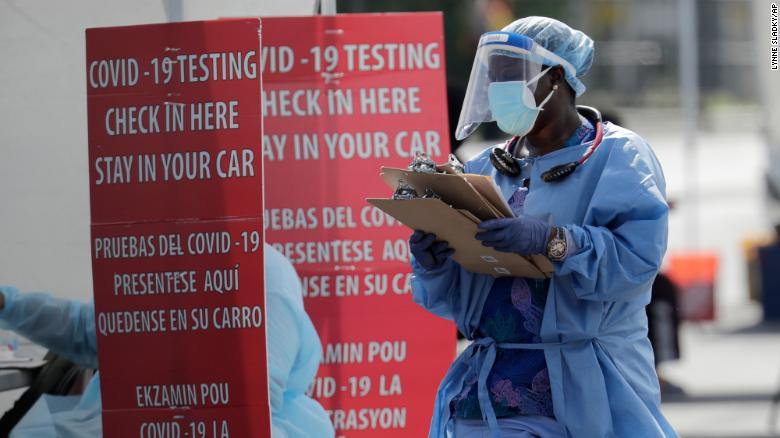
A health care worker carries a stack of clipboards at a COVID-19 testing site sponsored by Community Heath of South Florida at the Martin Luther King, Jr. Clinica Campesina Health Center, during the coronavirus pandemic, Monday, July 6, 2020, in Homestead, Fla. (AP Photo/Lynne Sladky)
The restrictions imposed on cities as large as Houston and Los Angeles could reverse the surprising economic revival of last month. The modest employment gains, trumpeted by the President, could turn into permanent job losses.
In comments that are likely to infuriate Trump even more, Dr. Anthony Fauci, director of the National Institute of Allergy and Infectious Diseases, made what is, unfortunately, becoming an obvious point: the rapid openings have triggered a disaster.
“It’s very clear — and we know from countries around the world — that if you physically separate people to the point where you don’t allow the virus to spread … we know we can do it if we close,” Fauci said at a Stanford Medical School webinar.
“We don’t close down completely – and that’s why, when we went up, we started going down, and then we stagnated at a level that was really quite high – about 20,000 infections a day,” Fauci said. “So, when we started to reopen, we’re seeing today’s waves, as we speak, in California … in Arizona, in Texas, in Florida, and in several states.
There are some bright spots. For the first time in months, there were no COVID-19 deaths in New York City in a 24-hour period, a moment of liberation that Democratic Mayor Bill de Blasio called “knock and move.
Massachusetts announced that its seven-day average of positive tests had fallen to 1.7 percent — 94 percent less since mid-April. The lesson for states now at the center of the storm — which predated the U.S. Centers for Disease Control and Prevention’s guidelines on safe reopening — is sobering.
New York and Massachusetts bought what may still be only a temporary truce with the coronavirus for weeks of closures and a strict reopening process that waited for the infection curve to be properly suppressed before restrictions were lifted. Even now, there is no guarantee that the virus will not return to dangerous levels when normal life returns.
However, El Nuevo Herald reports that Florida reported 9,194 new confirmed cases of coronavirus on Tuesday and 132 deaths in 24 hours, the highest number of deaths from the disease recorded in the state since the start of the pandemic in March, according to the Florida Department of Health.
The state set a national record on Sunday with 15,300 infections on the day, but Republican Gov. Ron DeSantis of Florida is insisting on a reopening.
Assisted Reproduction Options

Roads are Opening Up
The Assisted Reproduction service combines various techniques to achieve a pregnancy when something prevents it from occurring naturally. It is an expensive specialty and demands technology, both for the diagnosis of the obstacle and for its solution
By Mileyda Menéndez Dávila
July 14, 2020
Translated and edited by Walter Lippmann for CubaNews.

Assisted Reproduction Author: Juventud Rebelde Published: 14/07/2020 | 11:04 pm
The Assisted Reproduction (AR) service combines various techniques to achieve a pregnancy when something prevents it from occurring naturally. This is an expensive specialty that demands technology, both for the diagnosis of the obstacle and for its solution.
High-tech options
Vitro Fertizization (IVG) requires an authorized laboratory for the sperm to fertilize the oocytes in a controlled environment. In less than a week, viable embryos can be transferred to a woman’s uterus to follow the natural course or frozen.
It is a complex, laborious method; only a quarter of the transfers are effective. The number of attempts depends on the number of embryos achieved.
There are classic IVF (the environment is created and the cells are activated) or by intracytoplasmic injection (the sperm is inoculated directly into the cell). In Cuba the first one is done.

Low-tech options
The most common technique is artificial insemination (AI): a catheter is used to deposit a concentrate of previously purified sperm in the uterus and fertilization is expected to occur. It can be fresh or frozen semen.
Depending on the link between the recipient and the donor, the AI is homologous if there is a marital relationship, or heterologous when the sperm comes from a bank (guaranteed, but anonymous).
The technique is simple and its complications are very low. The probability of success is between 15 and 25 percent, but several attempts can be made. High-tech options
In Vitro Fertilization (IVF) requires an authorized laboratory for the sperm to fertilize the oocytes in a controlled environment. In less than a week, viable embryos can be transferred to a woman’s uterus to follow the natural course or frozen.
It is a complex, laborious method; only a quarter of the transfers are effective. The number of attempts depends on the number of embryos achieved.
There are classic IVF (the environment is created and the cells are activated) or by intracytoplasmic injection (the sperm is inoculated directly into the cell). In Cuba the first one is done.

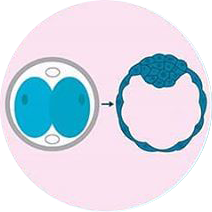
In vitro fertilization Observation of the embryonic development day by day
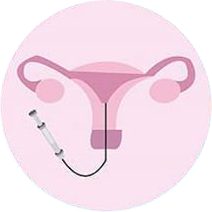
Embryo transfer to the uterus
The technique is simple and its complications are very low. The probability of success is between 15 and 25 percent, but several attempts can be made.
Solidarity childbirth
An increasingly common option for overcoming obstacles is surrogacy: a healthy woman is inseminated or lends her womb to receive embryos, and then hands over the baby to the person or couple who will raise it.
Examples of solidarity are the donation in sperm banks and giving embryos to other women when the desired number of children has been reached and they are available. Countries should regulate these processes because of the ethical and legal implications for their participants.
More than infertility
The AR is a useful service for very diverse users:
– Couples who are infertile due to a health condition detected in one or both of their members.
– Couples with no apparent obstacle that has tried for a reasonable time and does not achieve the desired pregnancy.
– Persons who wishe to exercise maternity or paternity without another parental figure in the upbringing.
– Couples of the same sex who depend on a donor or supportive womb.
– A person whose circumstances prevent the materialization of coitus or the assumption of parenthood and who wants to preserve his or her reproductive cells for more opportune stages. This has been the case for artists, sportsmen, people deprived of their liberty, with high-risk jobs or under medical treatment that compromises their fertility.
Deteriorated Highways Being Repaired

Deteriorated Highways Being Repaired
Villa Clara’s routes of national interest from the road to the tourist pole of Cayo Santa María are being repaired
 By Nelson García Santos
By Nelson García Santos
July 16, 2020
Translated and edited by Walter Lippmann for CubaNews.

Road to the tourist pole of Cayo Santa Maria Author: Twitter Published: 16/07/2020 | 10:55 am
SANTA CLARA, Villa Clara – In order to maintain the safety of traffic, conservation or repair actions are progressing in sections of the National Highway and the Central Highway in areas corresponding to this province, and the Caibarién to Cayo Santa María embankment, an important tourist pole in the northeast of the territory.
On the latter road, the laying of 2,000 tons of asphalt mix over three kilometers was completed, while the repair of three bridges, the metal road protection containers over seven kilometers and the renovation of signaling and repair of promenades, among other works, is in progress.
Pedro Julio González León, director of the Provincial Feasibility Center, emphasized that three kilometers of the motorway were also repaired, including the laying of rolling asphalt. Potholes were removed on the section between kilometre 260 and kilometre 320.
This and other works will continue in order to maintain the vitality of this road that, which, due to its years of operation, already needs capital repair in certain places
In addition, 1,900 tons of asphalt were laid along two kilometers of the Central Highway in Villa Clara Improvement work will continue there, as well as along the route from the Abel Santamaría International Airport to Caibarién and several of the Turquino Plan in Escambray.
What has been done, despite the limited resources and other effects, is part of the country’s effort to renew and stop the damage to the roads.
When Violence is Defined with Symbols

When Violence Against Women is Defined with Symbols
 By Ania Terrero
By Ania Terrero
Cubadebate journalist. Graduated in 2018 from the Faculty of Communication of the University of Havana.
On Twitter @AniaTerrero
July 16, 2020
Translated and edited by Walter Lippmann for CubaNews.

Sexist stereotypes are repeated ad nauseam in the media and cultural industries. Photo: Sophia.
Media that accuse, simplify or ignore victims of gender-based violence; others that silence inequalities. Soap operas that show women concerned about their relationships, motherhood and only later, sometimes for professional fulfillment. Video clips with abundant shots of almost naked dancers, offering their charms to the artist in charge. Advertisements where, while they cook, wash and dream of ideal household appliances, they drive luxury cars and manage life beyond the home.
The list is long: sexist stereotypes are repeated ad nauseam in the media and cultural industries. Over and over again, patriarchal principles are naturalized [socially “acceptable”] according to which women should be beautiful, sensual and delicate, take care of household chores and children, fulfill the sexual desires of their partners and belong to men. They perpetuate, in short, other forms of abuse, although this time in a symbolic way.
In the words of the French theorist Pierre Bourdieu, symbolic violence refers to a group of meanings imposed as valid and legitimate by the patriarchal culture, which are based on male supremacy and domination and, therefore, have a close relationship with power and authority. But the conflict is more complex and has many forms.
As explained by the journalist, professor and expert in gender issues Isabel Moya, in her article From Silence to Media Show, this phenomenon implies “the reproduction in the mass media, and in general, in the cultural industries of a sexist, patriarchal, misogynist discourse that relies on prejudices and stereotypes to present reality and social processes in all areas: the productive and reproductive, the public and the private, the basis of the economic structure and the socio-cultural superstructure”.
In other words, a kind of vicious circle is produced in which the makers of these discourses validate and transmit myths and macho images which, in turn, they inherited from previous generations. By the work and grace of the latent patriarchy, stereotypes persist and are amplified as informative, audiovisual and entertainment alternatives grow.
This happens, moreover, in a world where a relatively small group of transnational companies dominate the information and entertainment market. Conglomerates such as AOL-Time Warner, Disney, Sony, News Corporation, Viacom and Bertelsmann dictate the what and the how. They decide what global audiences will see, hear and enjoy. In short, a few decide for many and influence them.
The greatest danger lies in the fact that, directly or indirectly, they tend to naturalize a gender-biased construction and a subordination scheme where women play at a disadvantage. As a result, it contributes to reproducing the causes of male violence against women and girls.
“The media establish, through their discourses, an axis of cultural matrices, where the hegemonic power is made explicit and reproduced. They constitute one of the mechanisms of reproduction of the patriarchy on the level of subjectivity,” Moya said.
In relation to the above, symbolic male violence must be analyzed in a broader context. As the journalist specializing in gender issues, Lirians Gordillo, explained to Cubadebate, feminism and gender theory had the clarity to demonstrate the interconnection between different forms of discrimination. “The relationship between patriarchy, capitalism and racism, among others, as systems of oppression, allows them to be sustained and updated,” she said.
Therefore, symbolic macho violence is accentuated and acquires particular nuances when other categories such as skin color, place of residence, sexual orientation and gender diversity are involved. It is vital to recognize these forms because they allow us to identify zones of silence where it grows and intensifies.
Abuses that are hidden from view
The first step in dismantling symbolic male violence is to learn to identify it, but this is rarely easy. It often takes more subtle forms than physical, economic, sexual and even psychological. Moreover, it happens in a world of cultures and words where norms are not always clear, where almost everything is considered valid and where, therefore, feminist demands are often assumed to be excesses or exaggerations.
This phenomenon goes beyond perhaps obvious manifestations, such as the objectification of the female body and the re-victimization of those who suffer gender-based violence. Many times, it begins in apparently simple expressions such as silence or absence. The fact that many of the inequities and discriminations that women face today do not usually appear in the media and in entertainment products is a form of abuse.
In the opinion of Lirians Gordillo, because of the fact that what is not named does not exist, removing women with diverse identities from the public stage means not seeing them as people with rights.
“In the Cuban case, we are not talking about women in an abstract concept, but about those who are marked by other features such as skin color, age, gender identity, sexual orientation or the presence of a disability. Perhaps the most absent are transsexual women, lesbian women and black women,” she said.
Addressing gender conflicts from a lack of knowledge, reproducing the stereotypes that make them possible, is as serious, if not more so. According to Isabel Moya, these issues have gone from being “what is not talked about” to being illuminated by the spotlight.
However, she explained, “the lights only illuminate some issues: violence against women, abortion, marriage between homosexuals or lesbians… But more than true light, what prevails, with its honorable exceptions, is the banal approach, the morbidness, the sensationalism that becomes yellowish in some cases. Commonplaces that support myths and stereotypes are repeated ad nauseam”.
And there goes another form of symbolic violence that is almost never evident. Sexism, prejudices and macho representations dominate a good part of the informative and leisure production in the world where we move. They validate a model where women, in more or less obvious ways, are subordinated to men, depend on them or, when they try to make a difference, are excluded. These problems do not only affect them, but also all those who break with the moulds of an essentially conservative society.
Video clips and songs that depict women as objects of desire, films that sell stories where violent men fall in love with nice girls and these girls do their best to save them from themselves, advertising that outlines the roles assigned to each sex and promotes an unattainable ideal of beauty, comedy shows that ridicule homosexual relationships, sensationalist headlines and the stereotypical treatment of gender violence that gains space in the media are just some examples of this phenomenon.
Moya mentions others: “Symbolic violence is exercised when women of the South are treated with folkloristic or xenophobic approaches; when love between women is blamed; when so-called ‘women’s issues’ are confined only to certain sections of newspapers or newsreels; when the lyrics of a song cry out to the four winds to ‘punish’ it; when the protagonist of a series for teenagers only lives for her ‘perfect physique’ and we see her multiplied in dolls, T-shirts and disposable cups”.
The persistence of a sexist language, which privileges the use of the masculine as a universal generic, evidences other forms of macho abuse in the symbolic realm, said Gordillo. This goes beyond written or oral expression and is manifested in other ways in audiovisual products. “We have to analyze what the conflicts of women and men are in series and films, in what roles they appear, and what relationships they establish between themselves,” he added.
Cuba, realities and challenges of a latent violence
Although the work of training and education on gender issues among journalists, communicators, artists and creators has already begun to bear fruit, Cuba does not escape the examples and consequences of symbolic violence.
According to Lirians Gordillo, in audiovisual production, with a few exceptions, a patriarchal representation of women persists. The usual conflicts and interests for them are still the traditional ones: family, couple relationships, aging. Even when they have an active public and professional life, the problems associated with it are subordinated to the previous ones.
As Cuban researchers have pointed out, the public arena is one of the main spaces of progress for Cuban women. “They tend to have greater participation and representation in decision-making in different spheres, but patriarchal relations still prevail within the domestic sphere. It is very curious how this reality is represented in fiction, soap operas and other products,” said the journalist.
At the same time, research on the Cuban press has detected challenges and obstacles that still limit the treatment of issues related to macho violence, human trafficking, feminist struggles, inclusive language and good ways of doing gender journalism.
The last ten years have made some differences if we are talking about symbolic violence. For Gordillo, if one analyzes the informative and entertainment production in that period, one finds more professionals within the communication interested in breaking with macho stereotypes and more communicative products that assume diversity.
This shows the possibilities of a real change and its consequences. However, he said, the majority of products continue to reproduce symbolic violence, even, sometimes, with the intention of being inclusive and not reproducing stereotypes.
According to the journalist, good intentions are not enough because the way we look, the visual codes, the construction and representation of that reality have been formed and educated from the patriarchy. “We have to unlearn many stereotypes, many representations and many macho codes. That needs knowledge, it takes a process of questioning, of getting out of comfort zones above all,” she said.
In this way, filmmakers, artists and communication professionals must combine personal preparation with the use of advisors and specialists when building works and products that approach these issues. Even in those who do not touch on gender conflicts directly, prior training is necessary because these issues usually cut across any representation of society. Alliances between academia, research, communications and artistic creation are vital.
Diversity and systematization of communication products that address male violence is another key point. “Due to its complexity, this problem cannot be analyzed in a single communicative product, once a year or in a specialized media. It is a conflict that needs to be discussed, represented and deconstructed in a systematic and diverse way,” said Gordillo.
Male violence and its expression in the symbolic realm is an urgent challenge. It limits and threatens women’s lives and their rights, but it also affects the development of the nation. Therefore, the best possible response will be one that combines social, political, legal, educational and health efforts, among others, and is articulated as a comprehensive policy. In short, the country we want to be is also at stake.
Iván Cepeda: “Cuba was Impeccable”

Iván Cepeda: “Cuba as a Guarantor was Impeccable”
By Enrique Moreno Gimeranez
July 15, 2020
Translated and edited by Walter Lippmann for CubaNews.
Iván Cepeda Castro was representative to the House (2010-2014) and senator (2014-2018 and 2018-2022) for the Alternative Democratic Pole. From 2012 to 2016, he served as facilitator of the peace process between the Colombian Government and the Revolutionary Armed Forces of Colombia-People’s Army (FARC-EP) and had similar responsibility in the dialogues between the executive and the National Liberation Army (ELN) between 2014 and 2018.
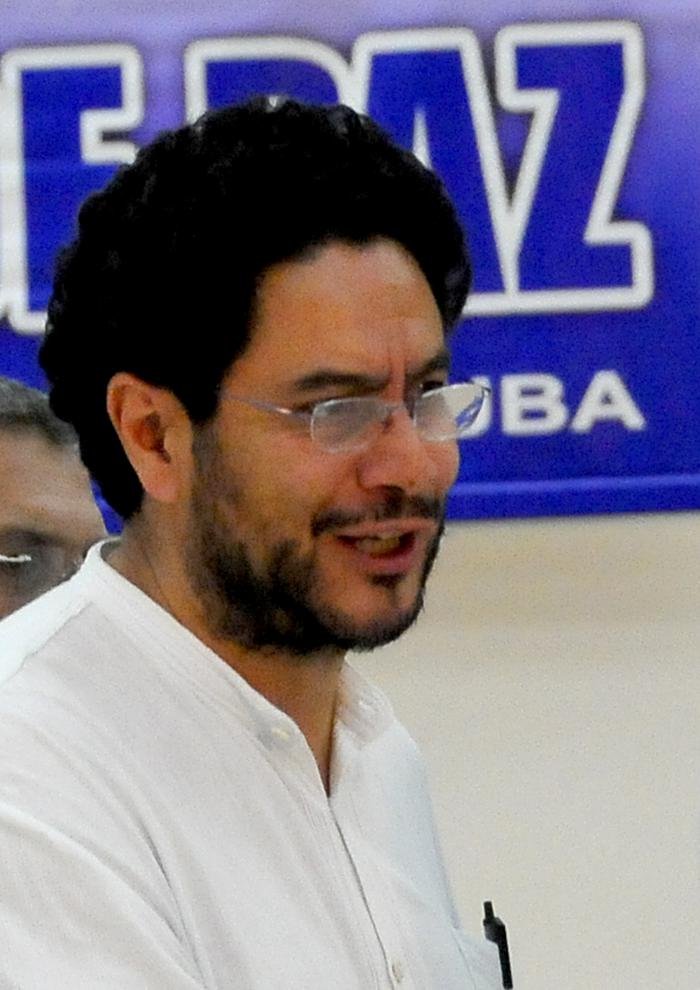
Iván Cepeda has dedicated himself to the defense of human rights and the search for peace in Colombia Photo: Juvenal Balán
For more than 20 years, he has devoted himself to the defense of human rights and the search for peace in Colombia. It has not been an easy road. Because of his work for justice for the victims in his nation, he has received countless threats against his life, had to remain in exile for several years and faced political persecution.
Iván Cepeda Castro is a man of principle who dreams and acts, as a citizen and a politician, for a better country. Representative to the House (2010-2014) and Senator (2014-2018 and 2018-2022) for the Alternative Democratic Pole, he served between 2012 and 2016 as a facilitator of the peace process between the Colombian Government and the Revolutionary Armed Forces of Colombia-People’s Army (FARC-EP) and held similar responsibility in the dialogues between the executive and the National Liberation Army (ELN) between 2014 and 2018.
Therefore, his views acquire special relevance to deepen in several issues related to the peace process in his nation. He kindly responded to Granma on different topics of current Colombian politics, of notable regional and global interest, taking as a starting point his assessment of Cuba’s role during the dialogues between his country’s executive and the FARC-EP…[sic]
“In each and every circumstance, Cuba’s role was fundamental, decisive, indispensable, because it created the necessary environment and context for the dialogues. A role that has been especially careful, respectful at all times of the Colombian State and its government and, of course, also of the delegation of the FARC-EP. The role of guarantor has been carried out with scrupulous care to avoid crossing that line where one begins to intervene in the dialogues, to try to guide them, or to break the independence that each of the parties must have.
“Cuba’s work as guarantor was impeccable, both in contributing to the solution of the problems inherent to the talks, facilitating the dialogues, fundamentally the rapprochements at the most difficult moments of the debate that took place at the Table. Also, at the most critical moments, with events outside the talks, the dynamics of the confrontation that continued in the country and another series of issues such as the fierce opposition of sectors that were not prone to dialogue, arose in Colombia.
“In all those moments of tension, in all those moments of difficulty in which dialogue was in serious danger, the work of Cuba and also of Norway was definitive; both teams of guarantors dedicated to seeking, precisely, to resolve the problems. This has also been the case in the implementation of the agreement, in which Cuba – together with Norway and also the United Nations Verification Mission – has played a central role”.
-More recently, the Cuba also played the role of guarantor in the peace dialogue between the Colombian Government and the ELN. What is your opinion of Cuba’s role in this process?
-It has also been fundamental in the dialogue processes that have taken place in relation to the ELN. A process which has allowed, for the first time in the history of the rapprochement with the ELN, the concretion of a negotiation agenda and also the beginning of the development of the points contained in that agenda.
“Unfortunately, the current Colombian Government has not had a congruent attitude towards such an effort. It has ignored the role of Cuba as a guarantor country in this context, ignoring the Protocol of Rupture that had been adopted and denying, not only the specific role of Cuba as a guarantor country, but also the role of guarantors in general in any peace process.
“The attitude of the Colombian Government towards these dialogues and towards the specific episode of this protocol is an attack, an aggression against the principle of legality of peace dialogues in any circumstance”.
-A few voices in the current Colombian government have deployed a series of hostile actions against Cuba…
-The Government has not only ignored this debt of recognition and gratitude towards Cuba with regard to its contribution to the peace process but has also taken an openly hostile attitude towards Cuba’s role in the international context and, in particular, with regard to peace in Colombia.
“It is part of a conception of International Relations that this government has developed, totally folded and absolutely subordinated to the interests of a radical and extremist sector of the White House policy today and that, fundamentally, obeys the electoral dynamics and the debts that Donald Trump has with a Republican political sector in the state of Florida.
“This is what, unfortunately, has led Colombia to assume the sad role of a kind of battering ram in US policy towards Cuba, Venezuela and the region in general”.
-In this sense, among the latest events in his country is the arrival on Colombian soil of the U.S. Security Force Assistance Brigade.
-Colombia becomes the platform and the laboratory of an aggression policy of the current US Government towards countries in the region. It is evident that it is serving as a leading government in the policy of aggression towards Venezuela and Cuba. “We are now witnessing what is called this “by invitation” military intervention, that is, the presence of an elite brigade of the U.S. Army Southern Command in our territory. This could easily become a scenario of international confrontation, of a multinational nature, in which not only would Colombia and the U.S. military forces be involved against Venezuela, but also, eventually, in a confrontation with other world powers such as China and Russia. It is clear that this scenario is highly dangerous and the policy of the current Colombian Government is being applied to it.
-The work of the High Commissioner for Peace, Miguel Ceballos, was questioned by you and other legislators during a debate on Political Control in the Second Committee of the Senate at the beginning of June. Can you give us more details on this?
-We argued in the debate on Political Control that High Commissioner Miguel Ceballos has produced a radical transformation in the responsibility he has in the Government. He should be the official in charge of peace policy and we see that his entire management has been oriented precisely in the opposite direction: in generating obstacles, difficulties and problems to make the implementation of the Peace Agreement already achieved practically impossible. In addition, in preventing the development of a peace process with the ELN and, within that function, of course, in having contributed to the aggression against Cuba. In particular, having actively promoted, as he himself accepts, the inclusion of Cuba in the list of those called by the United States countries that do not cooperate in the fight against terrorism.
-On 15 June, you and other congressmen also welcomed, through a statement, the decision of the Government of Iván Duque to maintain and consolidate diplomatic relations with Cuba?
-It is very positive that, in statements made by government officials, the status of Cuba as a guarantor country has been ratified, but we consider that to be insufficient. The problem that generated the lack of knowledge of the Protocol of Rupture of the conversations with the ELN must be left resolved. So that work of Political Control, which we exercise as congressmen, is going to continue and we are going to develop new actions seeking that the Colombian Government responds in an integral and full way to its commitments.
– What actions could the Government of Iván Duque undertake in support of the Proclamation of Latin America and the Caribbean as a Zone of Peace?
-The only way for the current Government to straighten out the course of the country, after such an erratic and unfortunate leadership as it has had in these two years, is to move towards a serious peace policy, which includes the full implementation of the Peace Agreement, the resumption of the dialogues with the ELN and the promotion of a radically different international policy, oriented towards cooperation, integration and towards that objective of making our region a Zone of Peace.
From the “Monkey Trial” to Our Times

From the “Monkey Trial” to Our Times
In July 1925, 95 years ago, in the small town of Dayton, Tennessee, the so-called “Monkey Trial” was held. It all began with the arrest of teacher John Scopes, who was accused of explaining to his high school students Darwin’s Origin of Species.
By Abel Prieto Jiménez
July 17, 2020
Translated and edited by Walter Lippmann for CubaNews.

The same irrational obstinacy of Darwin’s deniers reappears in Trump’s dismissive attitude towards science and scientists and in his erratic and criminal response to the pandemic. Photo: AFP
In July 1925, 95 years ago, in the small town of Dayton, Tennessee, the so-called “Monkey Trial” was held. It all began with the arrest of teacher John Scopes, who was accused of explaining to his high school students Darwin’s Origin of Species.
He had violated a Tennesee law that forbade “the teaching of any theory that denies man’s Divine Creation as it is in the Bible, and replaces it with the teaching that he is descended from an order of lower animals.”
Many local people demonstrated in the streets with signs and shouts in favor of their religious values and against Scopes and Darwin himself, whom they saw as representatives of the Devil.
From the caricatured simplification of the thesis of evolution (“we are descended from the monkey”), the name with which the trial passed into history was born. It received great publicity in its time and ended up being presented as a duel between two sides, “creationists” and “evolutionists”, and between two prestigious lawyers.
The press in the North showed the clash between a world view that was typical of “deep America”, closed in itself, rural, moralistic, anti-scientific, very religious, and another “free thinker”, open to the debate of ideas and the advances of science.
Scopes was finally found guilty; although he was only sentenced to pay a fine and did not go to prison, as the prosecutor and the extremist sectors of the people wanted.
A theatrical piece based on the trial was released years later, and from it several versions were made for film and television. The sympathies in these plays tend to be on the “liberal” side, although, as in the U.S. entertainment industry, there is no serious investigation into the real causes of the conflict.
Within the questionable and undemocratic US electoral system, “Deep America” contributed decisively, in 2016, to Trump’s victory.
In that space, more cultural than geographical, analysts locate the “hard” electoral base of the ultra-right, associated with the stereotype of the white, Protestant, sexist, homophobic, illiterate, racist, hunter and gun lover, attached to Republican politics, the most conservative morality and the traditional concept of the family. With an exalted and messianic image of his country, he lacks curiosity about universal culture and that which thrives in New York and other US cities with a cosmopolitan vocation.
Joe Bageant wrote an incisive, exceptional book, Chronicles of Deep America, in which he characterizes the scam of the Yankee model and denounces the decline of the Empire on a planet controlled by corporations. His description of “that provincial America,” inhabited by churchgoers who “fanatically listen to the pastor explain the infallibility of the Bible in relation to all known matters, from biology to baseball rules,” and “are not even able–and do not care much about–to put Iraq or France on the map, assuming they have one, is very valuable.
Many believe that Trump is addressing this hard core of voters most of the time, in his speeches, in his tweets, in his permanent show.
The same irrational obstinacy of Darwin’s deniers reappears in Trump’s dismissive attitude toward science and scientists and in his erratic and criminal response to the pandemic.
Trump has also exceeded the political use of the Bible. On June 1, he ordered the removal of anti-racist protesters to walk through a park to St. John’s Church and “hold up a Bible in front of the cameras, like some kind of championship trophy,” as one journalist ironically put it.
Mariann Budde, the bishop of the Episcopal diocese of Washington, said: “It was traumatic and deeply offensive. Something sacred was misused for a political gesture.
Last Friday, in Florida, at the Doral Jesus Church Worship Center, a refuge for terrorists, in a shameful rally where he avoided talking about the health catastrophe, Trump mixed internal and external enemies under the “caused” word socialism. The Democrats, he said, are standing alongside those who are knocking down statues. And he accused them of wanting to do the same with the statues of Jesus Christ.
An evangelical Christian of Cuban origin went so far as to say that Trump is “God’s chosen one” to stop the communist threat in the United States.
Let us remember that in the 2016 campaign this “chosen one” used inquisitorial language to refer to Sanders and Hillary Clinton: “He made a pact with the devil. She is the devil.” This is the kind of medieval insult used in 1925 by the people of Dayton to attack Scopes and Darwin.
The pandemonium virus

The pandemonium virus
Our greatest threat is not pandemic, but “pandemonium”. Among the meanings that appear in the Grande Dicionário Houaiss of Portuguese is the following: pandemonium is an “association of people to practice evil or to promote disorder and confusion”
Author: Frei Betto | internet@granma.cu
July 15, 2020 00:07:24
Translated and edited by Walter Lippmann for CubaNews.

Aerial view of tombs in el cementerio Nossa Senhora Aparecida, in Manaos, Brazil. Photo: AFP
The Brazilian news program prioritizes the advance of the pandemic and the ineffectiveness of the federal, state and municipal governments. Allegations of corruption, such as the purchase of overcharged respirators and misappropriation of public funds, follow one another. What each of us fears most, even those who for reasons of survival are forced to disregard confinement, is contracting the virus in a lethal way.
Is it true that our greatest threat of genocide is COVID-19?
I don’t think so. Our greatest threat is not pandemic, but “pandemonium”. Among the meanings that appear in the Grande Dicionário Houaiss of Portuguese is the following: pandemonium is an “association of people to practice evil or promote disorder and confusion”.
The main evil that threatens the Brazilian nation today is the government of Bolsonaro, who suffers from thanatomania, an obsession with death. A person suffering from phallic obsession embodied in weapons, who defends torture and exalts torturers and paramilitaries, certainly does not feel the slightest concern for the growing number of victims of the pandemic, whether 60 000 or 600 000, because she is psychologically blocked from warning the other. He only manages to see himself and the extent of himself, as his children.
It is the syndrome of depersonalization, a disorder that leads to insensitivity and makes feelings just work in the head, that is, one reasons about them without managing to experience them.
A person who likes to shoot so much and brags about his good aim doesn’t have to care about a wave of lethality, as long as he doesn’t get it. Since he cannot follow through on his manifest desire to “kill 30,000”, as he has said, he is pleased to see the number of dead multiplied daily by the COVID-19.
His only concern is that the pandemic will seriously affect the economy and, consequently, his chances of re-election, which psychologically can be understood as perpetuation. He acts as if he were invulnerable. He escaped an alleged stabbing attack, so it will not be a “crack” that will bring him down. That is why he does not respect confinement or social isolation, goes out on the streets without a mask, does not avoid crowds and does not care about personal detachment.
It is this sense of impunity and immunity that must have crossed Nero’s mind when he saw Rome devoured by fire. Hugging his lyre, he was convinced that the fire would not reach his palace.
More serious than the virus is this government negligence. Because, in addition to thousands of deaths from the pandemic, it produces victims of the economy: the 13 million unemployed and the 120 million Brazilians, of the 150 million over 16 years of age who earn less than two minimum wages a month. That’s not counting those who will be affected by the recession caused by COVID-19.
The “pandemonium” virus spreads the specter of symbolic death, by giving free rein to police violence and the arms trade; undermining culture and respect for human rights; weakening education; and encouraging deforestation and the invasion of indigenous lands.
This “pandemonium” virus, which lives in the Alvorada Palace and has been carrying out its lethal work since the Planalto, is the most serious threat to democracy and the Brazilian nation.
Subscribe to Blog via Email
| M | T | W | T | F | S | S |
|---|---|---|---|---|---|---|
| 1 | 2 | 3 | 4 | 5 | 6 | |
| 7 | 8 | 9 | 10 | 11 | 12 | 13 |
| 14 | 15 | 16 | 17 | 18 | 19 | 20 |
| 21 | 22 | 23 | 24 | 25 | 26 | 27 |
| 28 | 29 | 30 | 31 | |||
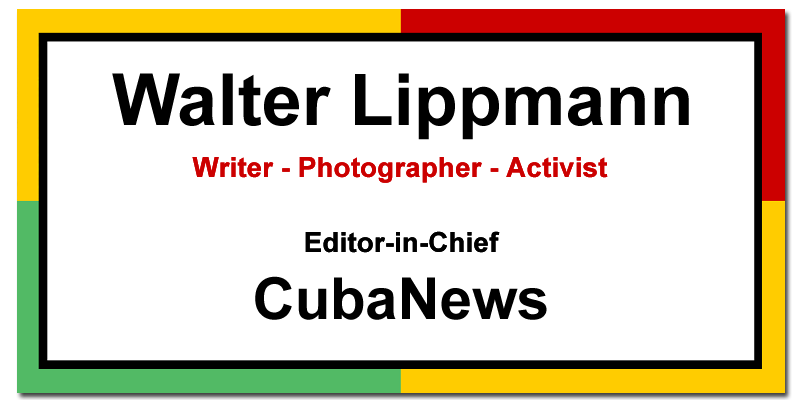
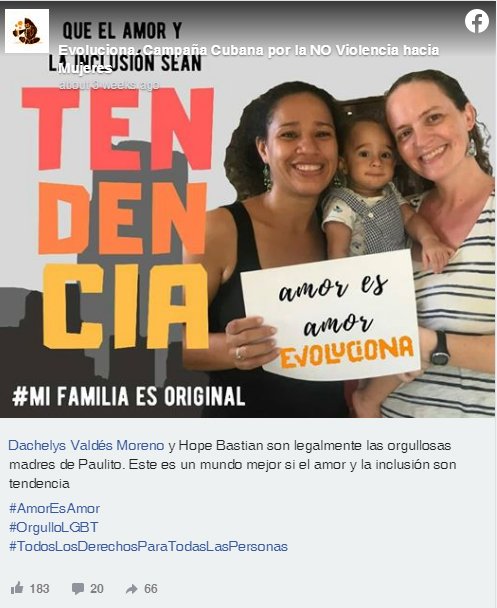
You must be logged in to post a comment.